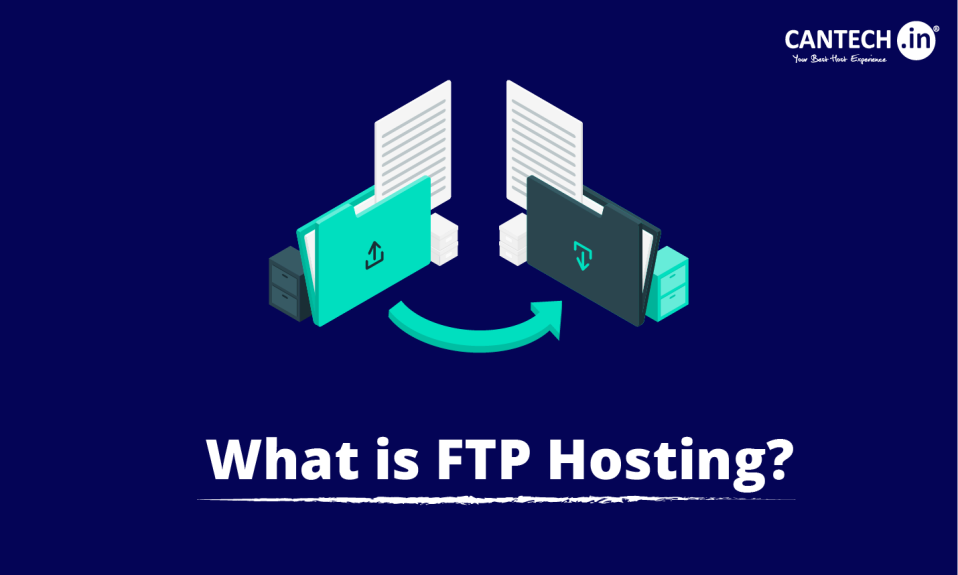Introduction
When working on computers that are connected to a network, knowing the host name of your device can help a lot. Your computer has an identifier that no other computer has on a network, and the fact that you know it can help you fix problems, connect, or just understand how your device interacts with others. If you haven’t learned to get your host name before don’t worry, it is a very easy process that can be done using Command Prompt (CMD).
For some who love to explore the hidden features of their machines or are faced with technical difficulties, CMD is a tool that has many capabilities. You can execute commands to retrieve general data about your devices, and the host name is one of the easiest to check. The method is not only simple but also fast, it takes only a few seconds to execute.
In this tutorial, we are going to show you how to use CMD in order to check what your host name is. If you’re using it for networking tasks or just getting familiar with CMD commands, it’s a handy trick that every computer user should know. Let’s dive into it!
What is a Host Name?
Basically, a host name is a computer’s one-of-a-kind signature on the network. It’s like having a name tag that tells other devices who you are in a crowded room of computers, servers, and networks. The host name serves as a contrast between the devices when they are hooked up in a local network or even when connecting over the internet. The host name helps to establish communication by making it easy to identify one device from another.
Host names are the solutions to remote connections, network troubleshooting, or locating a specific device. Take for instance the case of a computer which needs to identify itself to a remote service in a digital world. The absence of a host name would make it extremely difficult to locate your device on the network.
What Is Command Prompt?
Command Prompt (CMD) is a Windows-integrated resource that enables you to control your computer by providing text commands. Instead of clicking on menus and icons, you can type specific instructions to perform tasks, access system information, or troubleshoot problems. It’s just like a direct link between your brain and your computer, giving you more directional control over the system.
The Command line Interpreter is a means to communicate with a computer using text-based commands instead of mouse clicks and graphics. CMD opens up a world of possibilities beyond the regular graphical interface. The Command Prompt caters to all kinds of users, whether you are a novice who wants to grasp the basics or a pro who applies advanced solutions to problems, to do all these tasks you need just a couple of key presses.
Read More: What is VPS Hosting?
How to Check Host Name in Windows?
Finding your host name in Windows is a straightforward operation but can differ a bit according to the version of the operating system you are on. You can retrieve the information in several ways if you are using Windows 10, Windows 8, or any other older version of Windows. We will teach you the procedures to find your computer’s name by using different devices in the following sections. These ways of living are easy, secure, and available all over the place.
Let’s start by exploring how you can find your computer name in Windows 10 and Windows 8. All methods are designed in such a way that you will be finished with the job as soon as possible, so you can pick the one that suits you best!
How to Find Computer Name in Windows 10
Via Search Tool
Another way to find your computer’s name in Windows 10 is to use the search function. Hit the Start menu or use the Windows key and write “Computer Name” in the search bar. The system will start looking for relevant settings. Click on “View your PC name” from the list, and a window will appear with your device’s name on it.
This technique works best when you don’t have time to waste, and you would like to skip the menus and get the information you need. The search function in Windows 10 is highly efficient, which means that it can be quickly used by users who need the computer name immediately.
Via the Key Combination [Windows] + [R]
Another quick way is the key combination [Windows] + [R]. This will lead you to the Run dialog box. Do. type “cmd” and hit Enter. The Command Prompt window that opens is where you will type “hostname” and press Enter again. Your computer’s name will be shown on the screen immediately.
This method works best for users that have no problem with the use of shortcuts and want to use a keyboard shortcut to accomplish things quickly. It bypasses any settings or menus, thus making it efficient and straightforward.
Via the Settings
If you are one of those who prefer using menus, you will also be able to find your computer name via Windows 10 settings. Use the Settings Menu, which you can get to by clicking the Start button and then selecting Settings (the gear icon). Now you should go to System > About. Under Device Specifications, there you will find your Device Name.
This method may require a few more clicks but it gives a detailed explanation of your device such as the hardware and software specifications of your computer as well as the host name.
How to Find Computer Name in Windows 8
Via the Start Menu
In Windows 8, it is possible to find out your computer name through the Start menu. For instance, you can search for “PC info” or “Computer Name” by opening the Start menu and typing the keywords. Windows will intelligently list the relevant settings for you. The one that reads “PC Info” will show a window with your computer name if you select it.
This technique is simple and fast since it utilises the Start menu’s search functionality, which gives a direct route to your computer’s identity on the network.
Via Key Combinations
Using key combinations is yet another. Over the System window, Press [Windows] + [Pause/Break]. You can easily tell what’s your Computer Name from the information of your computer that’s described here. If you lack a Pause/Break key, you can use the [Windows] + [R] keys and type “sysdm.cpl”. After that hit Enter to bring up the System Properties window where the computer name is listed.
For users who are shortcut fans, this one is a fast way to system information, including the host name.
Via the Settings
Setting is another way to check your computer name in Windows 8. Open the Charms Bar by moving your mouse to the top-right corner of the screen, then select Settings > Change PC Settings. Choose PC and Devices and then, PC Info. Your computer name will be listed under PC Name.
The simple way to do this is have a walk-through look through your computer’s data supply. You can get all the information about your computer easily using this method. This can be very useful for troubleshooting and managing your devices.
Via the Hostname Command in Command Prompt
If you are a Command Prompt fan then this method is extremely fast and effective. Start Command Prompt by [Windows] + [R] pressing, typing the word cmd and hitting Enter. After CMD finally shows, give out the command “hostname” and Click enter. Soon after, your computer name will now be displayed on the screen.
This method is a good one for people who are comfortable with the Command Prompt command line and are looking for a quick way to get results.
How to Find Computer Name in Windows 7
Just like this in other Windows versions, the computer name in Windows 7 is easily found. You are the one who decides how to find the computer name in Windows 7. You may choose the graphical interface or the keyboard shortcuts. Both ways are efficient and Windows 7 offers several methods to locate your computer name. Below are different methods you can use to quickly access this information.
Via the Start Menu
Windows 7’s Start menu is a direct way to find out basic system details, thus you can even know your computer name. The start button must first be clicked then the Computer icon should be right-clicked and Properties must be chosen. This will show the System window, which is the area where you can locate your computer name among the Computer Name, Domain, and Workgroup Settings section.
This method is especially easy, you need just a couple of clicks. It is a very good picture for people who like to go through the same menus and windows, the system provides a lot of information in one place.
With the Key Combination [Windows] + [Pause]
If you are the one using the keyboard shortcuts, you can press the [Windows] + [Pause] button to get to the System window right away. This window includes the fundamental information about your system, like the Computer Name section from the Computer Name, Domain, and Workgroup Settings.
This is an excellent option for those who want to be a bit more direct and efficient when accessing their system properties. It is the best solution for people who are looking for a shortcut to their computer names.
Via the Hostname Command in Command Prompt
For users who are not so keen on Command Prompt, the computer name is just a straightforward command. First, click on [Windows] + [R], then type “cmd” and hit Enter. When the Command Prompt comes up, type “hostname” and press Enter. Your computer’s name will be shown on the display right away.
This method is great for CMD command admirers and it makes it possible to get a computer’s name quickly with almost no steps involved.
How to Find Out Your Computer Name in Mac
Now, you can also identify your computer’s name on the Mac system with various methods. With macOS, you can use both the simplified graphical interface and the more spell-like local hostname to apply simple techniques to get your computer name. Allow first to examine how to find your computer name on a Mac.
Via the Start Menu
In macOS, the computer name can be easily found by going to the Apple menu. Click on the Apple symbol at the top left of your screen, and then select System Preferences. There, click on Sharing, and the top of the window will show your Computer Name.
This method allows you to quickly and easily see your computer’s name while also giving you access to other sharing settings, useful when managing network connections or sharing files with other devices.
Find Your Local Hostname
To find your Local Hostname which identifies local networks, open System Preferences by clicking on the Apple icon, and navigate to Sharing. Under the Computer Name, you will see a line that says Local Hostname. It will look something like your-computer-name.local.
Local computer identification for users on a gadget is the main purpose of local hostname and it also can be used in some network configuration projects. With a local hostname, devices can send data over the network without needing to know the IP address.
Ream More: What is Dedicated Hosting?
Find Host Name via the IP Address
It is possible to determine the host name of an IP address with the use of the Command Prompt. For you to solve this and know which host you belong to according to your IP address, you can type nslookup on the CMD. To open the nslookup tool it is as easy as opening the Command Prompt on your windows computer and typing ‘nslookup [IP address]’ followed by the enter button. It shall search the host at that particular IP and offer the network information that a host is related to the IP.
This method is most effective for the network administrator or IT specialist who is likely to be dealing with several numbers of devices and might be at loss on which of the IP addresses is associated with which device on the network. Depending on whether you are having a problem with a connection itself, or if you need to identify a particular device this tool can certainly help highly.
Other Valuable Information from the Command Prompt
Except for managing to identify the host name, Command Prompt can grant you all kinds of important data regarding your network and system. Using it, you can easily get some important information about your computer such as your computer IP address, your business domain server IP address and even the IP addresses of your connection to the website. These details can assist you for managing a network, finding out problems or fine-tuning a network.
All these commands give a snapshot view of how your device operates within the larger network ecosystem of the world. It is also important to mention other useful information to be obtained by using CMD.
Computer’s IP Address
To discover your computer’s IP address by CMD, the process that you need to follow is ipconfig. Press Window key + R, then type in “cmd” to open Command Prompt then type in “ipconfig” on the black screen before pressing the Enter button. This will show you more information about your network adapters on your computer. To learn your computer’s IP address, click the link of the active network adapter and scroll through the section labeled IPv4 Address.
This is important information when you are solving the network connectivity problems or you need your device to be set for the specific network task. It allows you to know where your device stands in the network to either troubleshoot or change settings as one would wish.
Business Domain Server’s IP Address
For instance, there are times when you’re busy running a business network and you have to find an IP address of one of your domain servers; the “nslookup” is really a helpful command. To do the above, make sure you open the Command Prompt and type “nslookup [domain name]” before hitting enter. This will back the IP of your domain server, which will help if you wish to check on or troubleshoot your domain connection.
This information proves useful when a company has to rely on its domain servers to host websites, emails or any other services. It guarantees that your domain directs to the right IP address thereby avoiding a possibility of the ‘down time’ or connectivity problems.
IP Addresses between Computer and Website
In order to get the IPs between your computer and a particular website, one can use the “tracert” command. Go to the command prompt, then type tracert [website URL] then hit on the enter key. This command reveals how exactly your connection got to the specific Website displaying all the IP addresses passed through.
This is especially useful when the data indicates sluggish transmission rates or when deciding where a failure of signal exchange occurs. Coupled with other traffic monitoring tools, the trace results can tell if there is congestion or shut down at a certain point along the route hence pointing to the potential problem.
Understand CMD Output
Gaining output Command Prompt’s command deciphering can be an arduous task at first but simply working it can turn it into a major weapon in your arsenal for system management and troubleshooting. To illustrate, the results you receive when using commands such as ipconfig or nslookup will give you information such as IP addresses, DNS server names, and the condition of network adapters. Learning to read between the lines of these interpretations can empower you to make rational choices as for your network settings and adjustments.
The primary trick to CMD output steering is the knowledge of the appropriate sections that matter most for your specific job. Not all the information you get will be pertinent to your needs, but to find out the necessary ones will make your troubleshooting much easier. Eventually, you’ll get so accustomed to your system’s mechanics that solves issues faster.
Read More: What is Linux VPS Hosting?
Conclusion:
It has been highlighted that one gets to know his host name by using Windows Command Prompt which is helpful in acquiring important details about the computer or network. No matter if you are trying to solve a problem, creating a new connection or simply reading more about how your system is arranged, it is ideal to use CMD in order to find the host name. This information is not hard to find and with just a few commands, you can have access to them without this third type of software.
These basic CMD functions make you become familiar with the technical skill and whenever you are facing network problems or management, you are ready to handle those tasks. As you begin to explore using CMD you will quickly discover that you are able to tailor how your system interacts with networks and this saves much time in the future.
If you’re looking to improve your network performance or need reliable web hosting services, consider Cantech. With a range of hosting solutions tailored to meet various business needs, Cantech ensures fast, secure, and reliable web hosting. Whether you’re a beginner or a seasoned professional, Cantech’s web hosting services provide the support and infrastructure you need for seamless online operations. Let us help you grow your online presence with ease!
FAQs
Why would I need to check my host name?
You may need to check your host name for troubleshooting, setting up networks or finding your device in a network.
Can I change my host name using Command Prompt?
Yes, you can change your host name using CMD by running the command wmic computersystem where name=”current_name” call rename name=”new_name”.
What if Command Prompt doesn’t show my host name?
If CMD doesn’t show your host name, check your network connection or try running CMD as an admin.
Can I find the host name of another computer on my network using Command Prompt?
Yes, by using ping or nslookup with the target computer’s IP address you can get the host name.
What other Command Prompt commands are useful for network troubleshooting?
Commands like ipconfig, tracert and ping are used for network troubleshooting and connectivity issues.
Are there alternatives to Command Prompt for checking host names?
Yes, you can also check the host name from system settings, control panel or using PowerShell in Windows.
Is there a difference between the host name in Command Prompt and in network settings?
No, the host name in Command Prompt and network settings is the same; both show the name assigned to your computer within the network.
What is CMD machine name?
The machine name in CMD refers to the host name of the computer, which you can retrieve using the hostname command.








